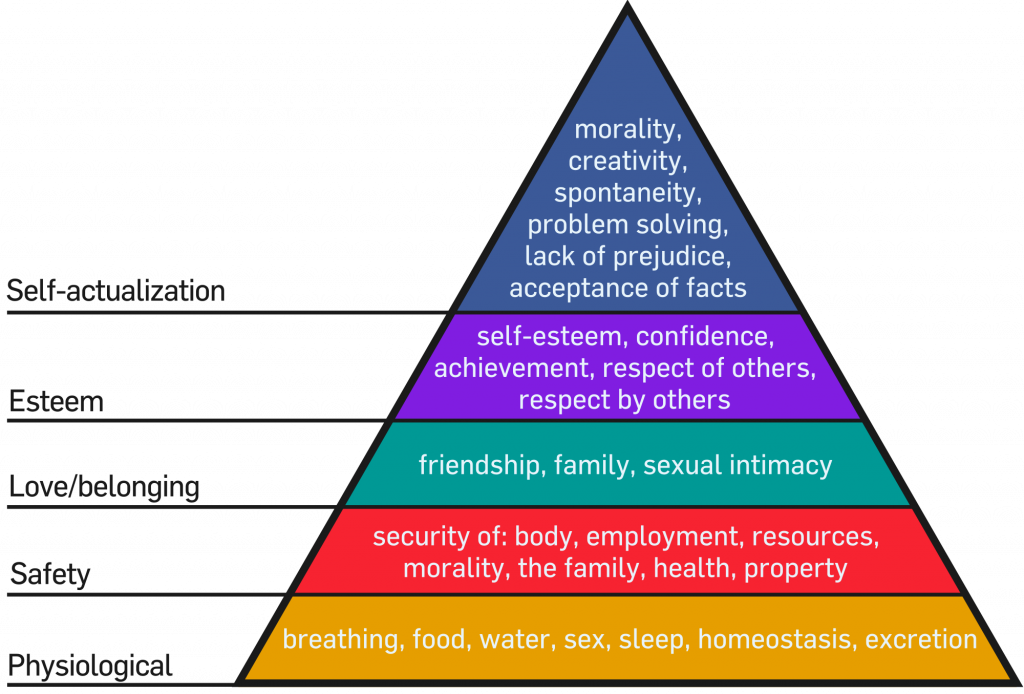Two Hierarchies of Needs
If you’ve taken a psychology class, you might be familiar with Maslow’s Hierarchy of Needs. The main point is that until people’s basic needs are met, like food and shelter, they can’t care about higher-level concerns like creativity. For example, if your coworker is worried about getting fired or if they don’t feel accepted into your organization, they’re not going to do their best work.

But did you know that Maslow actually learned about the worldview of the Blackfoot (Niitsitapi or Siksikaitsitapi) people and turned it into his Hierarchy of Needs? According to University of Alberta professor Dr. Cindy Blackstock, who’s a member of the Gitksan First Nation, the model is “a rip-off from the Blackfoot nation.” (Blackstock, 2014) (This blog post by Karen Lincoln Michel lays out Blackstock’s case and explains the model more deeply). Instead of a triangle, the Blackfoot people use a tipi. At the base is self-actualization, then community actualization, then cultural perpetuity.
There are two big differences between the models:
- Maslow focuses on the individual, while the Blackfoot model focuses on caring for the community and keeping culture thriving.
- Self actualization is the base of the Blackfoot model, while for Maslow it’s the pinnacle of human achievement.
These two competing models both remind us that thinking about our audience’s unmet needs will help us craft a persuasive strategy. More importantly, however, they show us that people’s needs don’t exist in a vacuum. Your audience’s cultural context shapes their needs.
Image Description
Figure 8.1 image description: This diagram represents Maslow’s hierarchy of needs. It is in the shape of a pyramid. At the base in yellow is physiological needs (breathing, food, sleep, sex), then safety in red (health, employment etc), then love/belonging in teal (friendship, family, sexual intimacy), then Esteem in purple (self-esteem, confidence, achievement), then self-actualization in navy blue (morality, creativity, problem solving etc). [Return to Figure 8.1]

